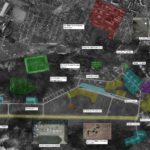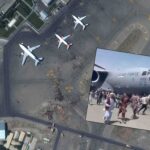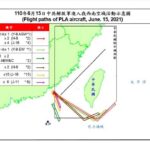A remote U.S. military outpost in southern Syria, known as al-Tanf Garrison (ATG) has been attacked on October 20th. Initial reports, later confirmed by officials speaking on conditions of anonymity to US press, said the strike included unmanned aerial systems (likely bomb-laden) and indirect fire – suggesting artillery or rockets.
Pictures on social media show several structures destroyed. According to one official, drones may have hit both the U.S. and the Syrian opposition side of the base. No injuries or fatalities have been reported so far.
For the last few hours I’ve been back and forth on these images, they are unconfirmed (I can not stress the fact they are unconfirmed) images of Al-Tanf Garrison, Syria. Reportedly showing the damage from last nights attack. The satellite tower and area matches recent imagery pic.twitter.com/XP1M2QIKR9
— Aurora Intel (@AuroraIntel) October 21, 2021
The “Allies of Syria Operations Room,” likely an Iranian backed militia, has claimed responsibility for the attack. The operational design is consistent with past Iranian-backed attacks on U.S. forces in Syria and Iraq.
VISUAL EVIDENCE CONFIRMS DAMAGE
Visual forensics confirm the images’ authenticity. Reverse image searches suggest that photos are authentic and not recycled from other events, while geolocation using available overhead imagery validates that the pictured site is indeed al-Tanf.

imagery: Maxar Technologies / annotations: T-Intelligence *The image is outdated (2020) and is only for reference
Satellite imagery allows a comparison of the location in the days preceding and following the attack. The darker areas, visible in the base’s center (see 2021.10.22), are likely impact marks or ground scarring resulting from the attack.

Preliminary-Battle Damage Assessment using Planet imagery shows an impact point in the middle of the base. Other “darkened dots” appear elsewhere in the base perimeter but we cannot validate those as impact points due to insufficient evidence.
THE CURIOUS CASE OF ATG
The Al-Tanf Garrison (ATG) and the surrounding 55 km exclusion zone are located near Syria’s border with Jordan and Iraq. Initially built to train and equip local Syrian opposition fighters, namely Maghawir al-Tawhra, and interdict ISIS activity along the tri-border area, ATG has since become a lynchpin against Iranian-backed transnational movements.
ATG is positioned along the critical M2 highway, linking Damascus to Baghdad, a more direct route for Iranian-backed militias to move supplies and fighters in southern Syria and beyond. While ATG blocks the shortest land route from Iran to Damascus or Beirut via Iraq, the IRGC can still move forces through the strategic Al Bukamal border crossing and central Syria. Nevertheless, ATG remains an uncomfortable outpost of the Iranian operations in Syria as it provides the US monitoring and prompt attack capabilities.
by Giulia Prior





